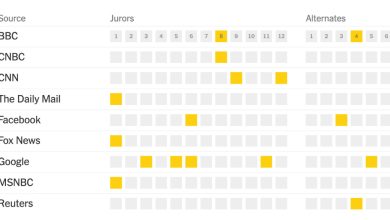Can Controlling Vehicles Make Streets Safer and More Climate Friendly?

In April 2017, a man drove a stolen truck into a crowded shopping district in central Stockholm and crashed it into a department store, killing four people and injuring 15 others.
The terrorist attack prompted the Swedish government to investigate how digital technology could be used to prevent these kinds of incidents in the future. It began a four-year research program to test one type, geofencing, in urban environments.
Geofencing is a virtual tool in which software uses GPS or similar technology to trigger a preprogrammed or real-time action in vehicles to control their movements within a geographical area. It can regulate a vehicle’s speed within the zone, determine whether the vehicle belongs there and automatically switch hybrid vehicles to electric driving mode.
Johannes Berg, senior adviser for digitalization at the Swedish Transport Administration, said the technology can improve traffic safety and lower emissions. It also has the potential to adjust speed based on road and weather conditions, and to ensure compliance with regulations, like stopping a vehicle if a driver doesn’t have a permit to enter a geofenced area, he added.
In simple uses — like when a map with restrictions is downloaded to a vehicle before the start of a trip to reduce speed automatically when it enters a low-speed zone — vehicles do not need to be connected to an outside source, Mr. Berg said.
But in more advanced applications — real-time use, for example — vehicles must be connected. Rules and regulations are in a tech cloud and could be changed based on the actual position of the vehicles, he said. “The cloud service can access the engine of the vehicle using the telematics connection of the vehicle.”
Sweden, which began a series of geofencing trials in 2019, has long been an innovator in vehicle-related safety. In the 1990s, it introduced Vision Zero, an approach to safety that takes human error into account. The goal is to eliminate all traffic deaths and serious injuries by creating multiple layers of protection; if one fails, others will create a safety net.
Sweden now has one of the lowest crash death rates in the world, and many cities globally have implemented the approach. Earlier this year the U.S. Department of Transportation officially adopted the strategy to address a dramatic spike in the death toll in the United States.
In Stockholm, geofencing pilot programs have focused on commercial traffic in the city center, assessing such things as whether deliveries to businesses could occur at lower speeds at night when streets typically have fewer people.
“Switching to electric drive, in combination with lower speed, can make night time truck deliveries almost silent,” Mr. Berg said. “Increasing night deliveries could lessen congestion during daytime rush hours and create a more even traffic flow around the clock,” improving an area’s quality of life.
In another trial, sensors added to pavements monitor pedestrian flow, which have been able to trigger speed reduction in pilot vehicles. “The trucks are actually decreasing their speed automatically,” Mr. Berg said.
Gothenburg has taken a lead in testing geofencing on public transportation. Since 2015, the city, collaborating with ElectriCity, a regional private-public partnership, including the Volvo Group, has been evaluating the technology on two bus routes. The assessment focused on busy areas like shopping streets and intersections. The city now has the capability to adjust geofenced zones based on real-time conditions, with bus operators getting information about the changes automatically.
During the trial, which was recently completed, buses operated at safe and fuel-efficient speeds in electric drive mode in designated areas.
“We see geofencing as a tool to create a safer city with better air quality and less noise,” said Malin Stoldt, a project manager for Gothenburg’s Urban Transport Administration.
Other pilot projects, some ongoing, include enhancing traffic safety around schools and creating smart urban traffic zones to protect cyclists. Geofence technology that prioritizes public transport vehicles at complex intersections is already in use for everyday traffic in Gothenburg.
Geofencing can also contribute to city spaces being used more dynamically, Ms. Stoldt said. “Areas can easily be changed and used for different purposes depending on the time of the day or the season.”
The trials have been well received, Ms. Stoldt said. At least one more bus line plans to incorporate the technology. Operators also approve of geofencing, she said, not only for safety reasons “but also the wear of the vehicles.”
Rodrigue Al Fahel, lead coordinator for the Swedish national geofencing program, said geofencing technology has been developing for awhile and is being used to target messages to mobile phones based on the phone’s location; manage commercial fleets; set maximum speeds and control parking of e-scooters; and to enhance some advanced driver-assistance systems, like intelligent speed assistance (ISA), which will be mandatory in all new vehicles in the European Union beginning in July.
Sweden is one of the most active countries experimenting with geofencing for general traffic, Mr. Al Fahel said, crediting that to “a great collaboration environment.”
Still, collecting, standardizing and digitizing data on the scale needed to widely implement geofencing remains a challenge. First, developers must come up with a way to make traffic rules machine readable and decide on communications standards. “This is something that has not been developed fully yet,” Mr. Al Fahel said.
However, collaborations in Europe have developed through projects like GeoSence and NordicWay to aid advancement.
A recent market analysis and a state-of-the art report concluded that geofencing is on the cusp of more widespread use. “It’s a tool for cities,” Mr. Al Fahel said. “You can plan the city in a different way.”
“We are trying to look into the potential and effects it will have on the traffic and transport system. It is not only about technology development,” Mr. Al Fahel said, but rather about creating a system that works and is accepted by all involved.
The pilot program, in its final year, has yielded enough promising results that the Swedish government is considering legislation amending traffic and other rules so municipalities are able to use geofencing for traffic management, said Mr. Berg, of the Swedish Transport Administration.
New uses of technology can bring up privacy issues. But one reason the Swedish program focused on professional drivers rather than private ones, Mr. Berg said, is “we believe it is different when the vehicle is a tool provided by the employer,” comparing it to employers’ ability to regulate company computers.
However, one of the reasons the European Union is considered to have the safest road system in the world, experts said, is that member countries emphasize community responsibility, along with individual rights.
“We realized that this technology might not be bulletproof for stopping terrorists, but when you can make technology smart and make the transport system more dynamic, then you can truly create a sustainable transport system,” Mr. Berg said. “It makes everything more efficient.
“The higher purpose is safety and sustainability,” he said. “They go together.”



